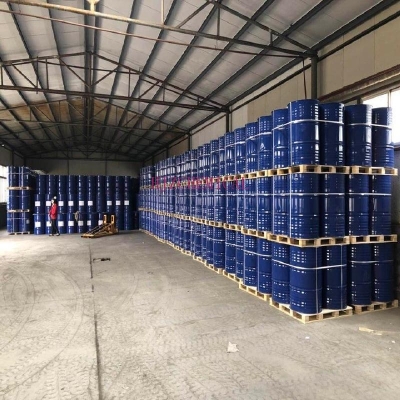-
Categories
-
Pharmaceutical Intermediates
-
Active Pharmaceutical Ingredients
-
Food Additives
- Industrial Coatings
- Agrochemicals
- Dyes and Pigments
- Surfactant
- Flavors and Fragrances
- Chemical Reagents
- Catalyst and Auxiliary
- Natural Products
- Inorganic Chemistry
-
Organic Chemistry
-
Biochemical Engineering
- Analytical Chemistry
- Cosmetic Ingredient
-
Pharmaceutical Intermediates
Promotion
ECHEMI Mall
Wholesale
Weekly Price
Exhibition
News
-
Trade Service
According to a new report by GTM Research and the Solar Energy Industry Association, the U.
S.
solar PV market added 10.
6 GW of capacity in 2017, down 10%
from 2016.
The report pointed out that although the US solar photovoltaic industry reached a high point in 2017, it still experienced rapid changes and declines
.
While both the residential and commercial solar sectors showed strong growth in 2017, installations in the residential and utility-scale sectors declined
for the first time since 2010.
Among them, weak markets in California and the Northeast were the main reasons
for the 16% year-over-year decline in residential installations.
In addition, this is partly because suppliers and installers in some countries are exiting the market, moving away from rapid expansion strategies and relying on consolidating existing market positions
.
Austin Perea, solar analyst at GTM Research and lead author of the report, said: "Residential solar has seen a clear decline
in all major markets.
In contrast, Minnesota's non-residential sector grew 28 percent
year-over-year as policy deadlines loomed regulatory needs in California and the Northeast, as well as continued expansion of community solar pipelines.
”
"Minnesota is a landmark year for community solar, with more solar installations installed in the state than entire American communities
," Perea explained.
We expect community solar to diversify geographically in 2018, with Maryland and New York being the main growth markets
this year.
”
This is also the focus of the Solar Energy Industry Association (SEIA), which focuses on the impact of the corporate and community solar market, and highlights that capacity growth in 2017 is still 40%
higher than in 2015.
Abigail Ross Hopper, President and CEO of SEIA, said: "Despite trade frictions and market corrections, the solar industry performed impressively last year
.
Particularly encouraging is the increasing geographic diversity of solar deployments from the Southeast to the Midwest, resulting in double-digit
increases in total installed capacity.
”
Looking ahead, GTM and SEIA predict that the U.
S.
solar market will continue to grow, but "won't reach the amazing record levels
we saw in 2016 until 2023.
" ”
However, the new solar module import levy will clearly impact the development of the industry in the coming years, but its impact is uncertain
.
Specifically, GTM and SEIA predict that the United States will add another 10.
6 GW of solar installed capacity in 2018, but the total installed capacity of U.
S.
PV is expected to more than double in the next five years, adding more than 15 GW
of PV capacity per year by 2023.
According to a new report by GTM Research and the Solar Energy Industry Association, the U.
S.
solar PV market added 10.
6 GW of capacity in 2017, down 10%
from 2016.
The report pointed out that although the US solar photovoltaic industry reached a high point in 2017, it still experienced rapid changes and declines
.
While both the residential and commercial solar sectors showed strong growth in 2017, installations in the residential and utility-scale sectors declined
for the first time since 2010.
Among them, weak markets in California and the Northeast were the main reasons
for the 16% year-over-year decline in residential installations.
In addition, this is partly because suppliers and installers in some countries are exiting the market, moving away from rapid expansion strategies and relying on consolidating existing market positions
.
Austin Perea, solar analyst at GTM Research and lead author of the report, said: "Residential solar has seen a clear decline
in all major markets.
In contrast, Minnesota's non-residential sector grew 28 percent
year-over-year as policy deadlines loomed regulatory needs in California and the Northeast, as well as continued expansion of community solar pipelines.
”
"Minnesota is a landmark year for community solar, with more solar installations installed in the state than entire American communities
," Perea explained.
We expect community solar to diversify geographically in 2018, with Maryland and New York being the main growth markets
this year.
”
This is also the focus of the Solar Energy Industry Association (SEIA), which focuses on the impact of the corporate and community solar market, and highlights that capacity growth in 2017 is still 40%
higher than in 2015.
Abigail Ross Hopper, President and CEO of SEIA, said: "Despite trade frictions and market corrections, the solar industry performed impressively last year
.
Particularly encouraging is the increasing geographic diversity of solar deployments from the Southeast to the Midwest, resulting in double-digit
increases in total installed capacity.
”
Looking ahead, GTM and SEIA predict that the U.
S.
solar market will continue to grow, but "won't reach the amazing record levels
we saw in 2016 until 2023.
" ”
However, the new solar module import levy will clearly impact the development of the industry in the coming years, but its impact is uncertain
.
Specifically, GTM and SEIA predict that the United States will add another 10.
6 GW of solar installed capacity in 2018, but the total installed capacity of U.
S.
PV is expected to more than double in the next five years, adding more than 15 GW
of PV capacity per year by 2023.







